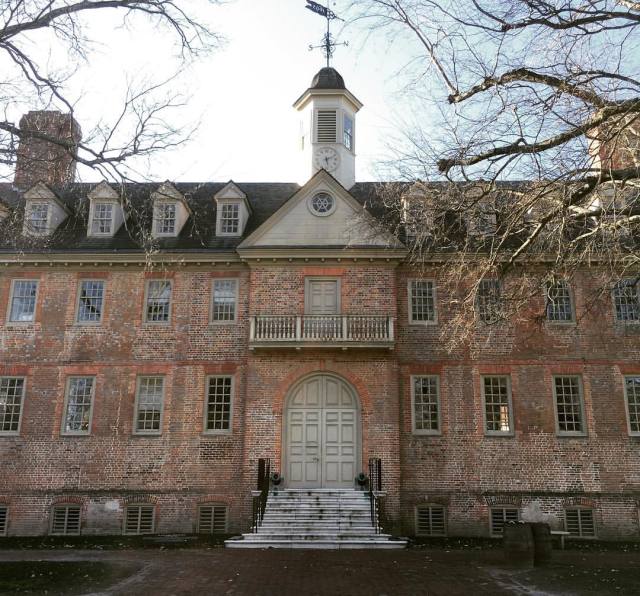
/wren-house-58a6d4d53df78c345b55d8b6.jpg)
It was through the speech and expression of figures like Frederick Douglass, Malcolm X, Rosa Parks, Martin Luther King Jr. The violent suppression of the speech of Black Americans was at the forefront of their subjugation during the slavery and Jim Crow eras (and in many cases, it still is).
#Wren building free#
Along with personhood come the rights of free speech and expression.
#Wren building full#
Nevertheless, the free dissemination of ideas is the best way to combat that evil.īlack Americans, women and other minorities have been oppressed because their full and equal personhood was rejected. The harsh reality is that some manner of evil will always exist. Of course, by antidote I do not mean a foolproof solution just as some antidotes leave traces of a poison or produce ugly side effects, so too free speech can allow some harm to society. The antidote for this suppression must be, as I advocated in my previous article, free speech and diversity of thought. Academic dialogue certainly has been inhibited historically, and many opinions have been actively and viciously suppressed - these include the opinions of the Black community, women and other historically oppressed groups. Whether that intellectual tradition has been fulfilled is an entirely different question. The Wren Building, by virtue of being the oldest academic building on campus, does symbolically represent an intellectual tradition of uninhibited dialogue. It stood through 270 years of the rejection of Black undergraduates based on the woefully misguided perception that they were somehow inferior. Later the Wren sheltered Confederate troops who used the College of William & Mary as a fortress from which to fight for the preservation of slavery. It was built on the backs of people who were trafficked, oppressed and enslaved simply because of the color of their skin. The Wren Building was designed and dedicated by political partisans who were blind and deaf to the humanity of others. What I did not discuss was the troubled and deplorable history of that very building.

In the article, I explained the choice of the Sir Christopher Wren Building as our symbol, stating, “As the oldest standing building at William & Mary, the Wren represents an intellectual tradition of uninhibited dialogue and debate, where no question is left unasked and no opinion is left unheard.” 8, 2021, I wrote an article discussing the purpose of the Christopher Wren Journal.

~ Creator: Special Collections Research Center, William & Mary Libraries.On Feb. 2018 Plaque at the Wren Building Honoring the First African American Women in Residence: A photo of a plaque installed in 2018 at the Wren Building to honor Lynn Briley, Karen Brown, and Janet Ely, the first African American women in residence at William & Mary. ~ Creator: Special Collections Research Center, William & Mary Libraries. Henry Billups can be seen in the left bottom corner. Wren Library, 1888: Interview view of the library at the Wren Building. Wren Yard, Circa 1869 ~ Creator: Special Collections Research Center, William & Mary Libraries. Henry Billups Ringing the Wren Building Bell, Undated ~ Creator: Special Collections Research Center, William & Mary Libraries. Media Images Wren Building, 1858 ~ Creator: Special Collections Research Center, William & Mary Libraries. Washington addressed the university community in the Wren Chapel.ĭuring the Spring of 2018, William & Mary erected a plaque at the Wren Building to honor the first three African Americans in residence at the university: Lynn Briley, Janet Brown Strafer and Karen Ely. In 1914, formerly enslaved author and activist Booker T. Billups worked for William & Mary from 1888-1952, a time marked by Jim Crow and Massive Resistance. He rang the Wren bell alongside President Benjamin Ewell and is uniquely known for procuring alcohol for students and faculty alike during prohibition. Henry Billups worked for the university for over fifty years, in a multitude of different capacities, including as a mentor to the young white men who attended the university.
#Wren building how to#
Greenhow called himself the "the only negro educated William & Mary" because he was taught how to read and write by a student. George Greenhow worked as a janitor throughout the antebellum years. Leading up to, during, and after the Civil War, William & Mary employed free people of African descent as well. The profits collected from the labor these individuals at the Nottoway Quarter funded scholarships for the white male students at William & Mary. Additionally, the enslaved worked on Nottoway Plantation, which was owned by William & Mary for several years. The enslaved were an integral part to the university's every day operations. William & Mary held people enslaved from its inception to the Emancipation Proclamation. By Special Collections Research Center, William & Mary Libraries.


 0 kommentar(er)
0 kommentar(er)
